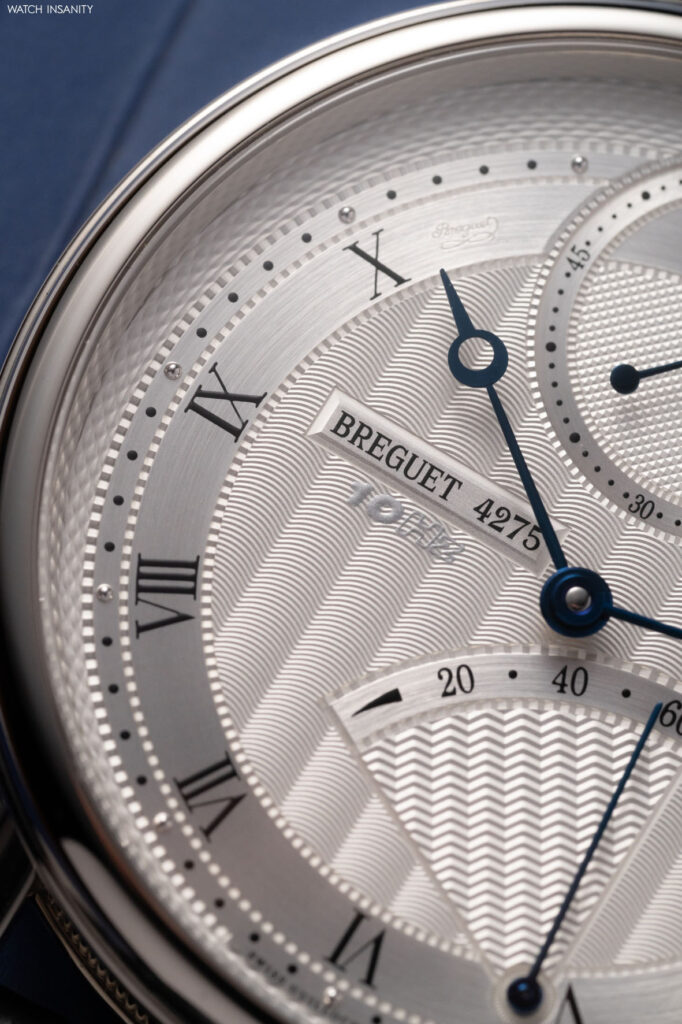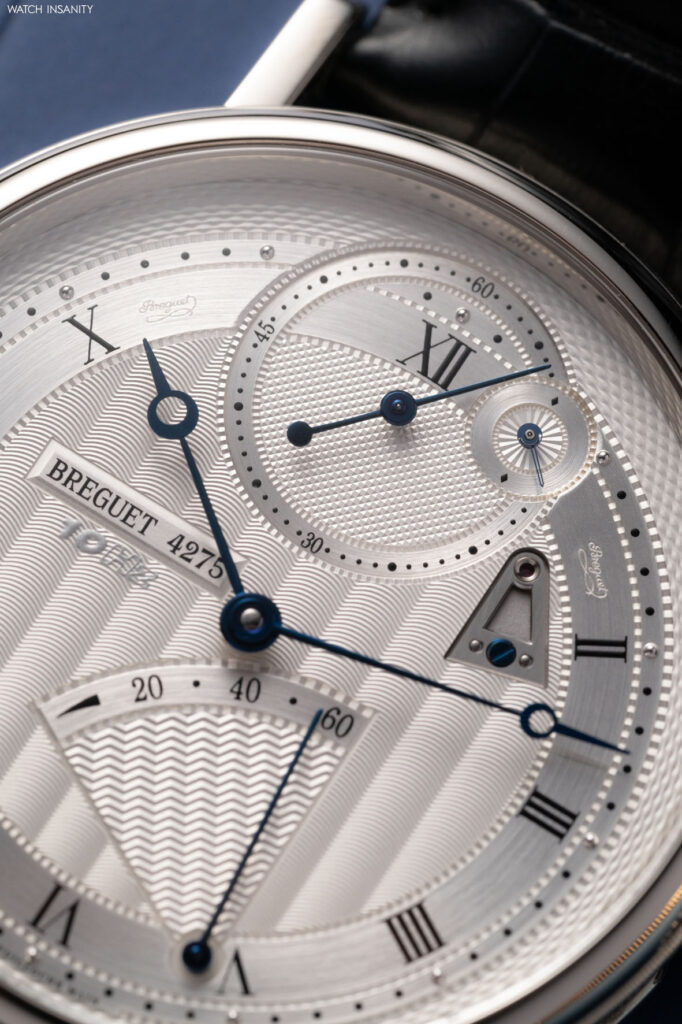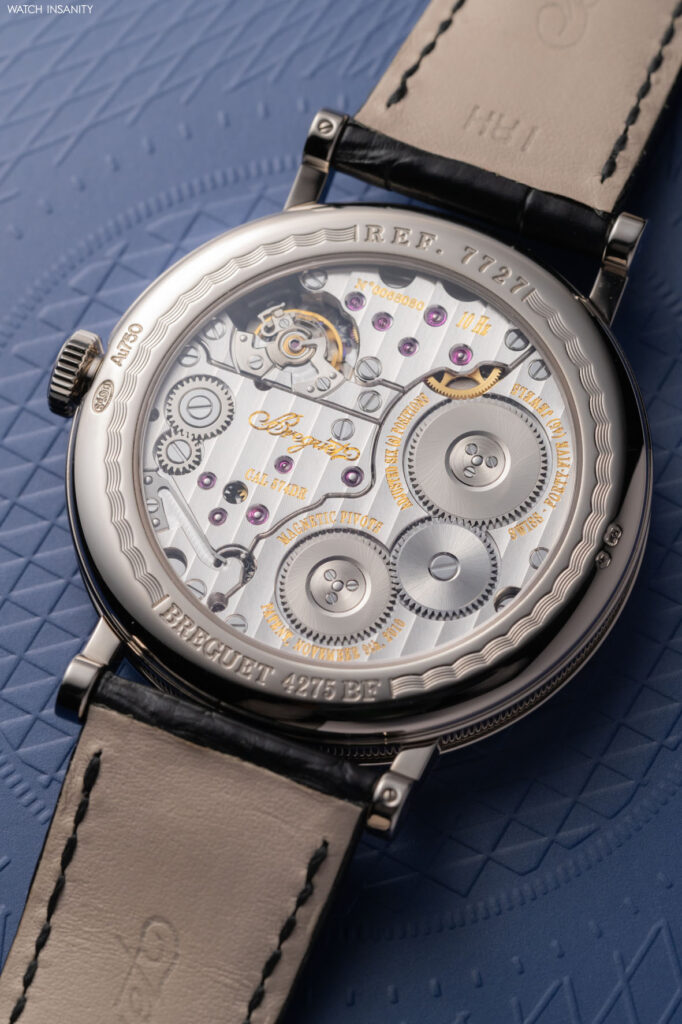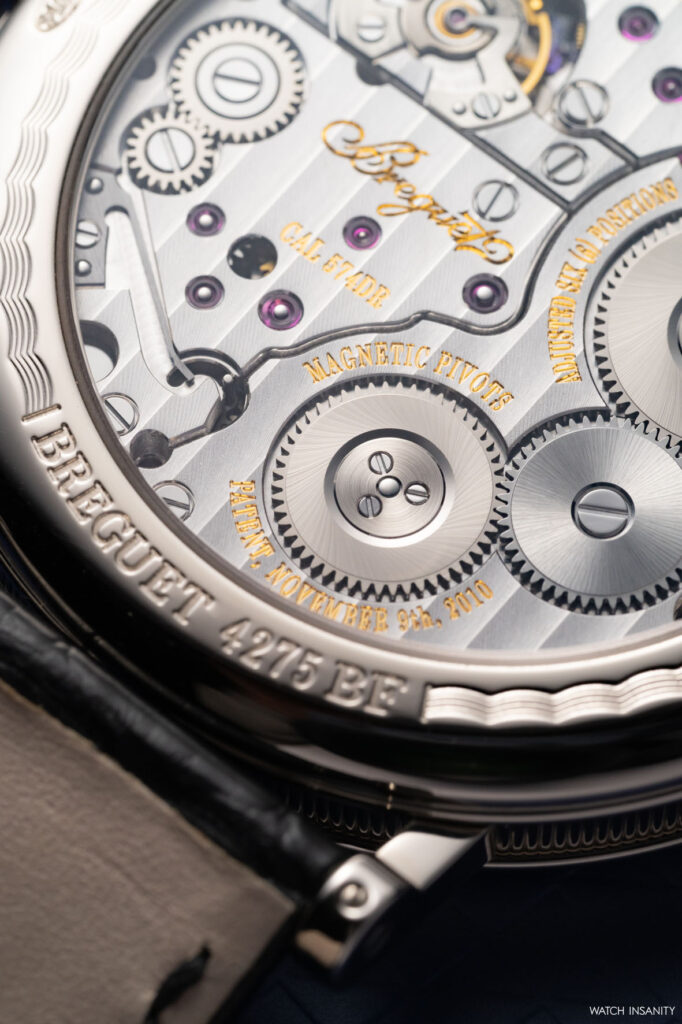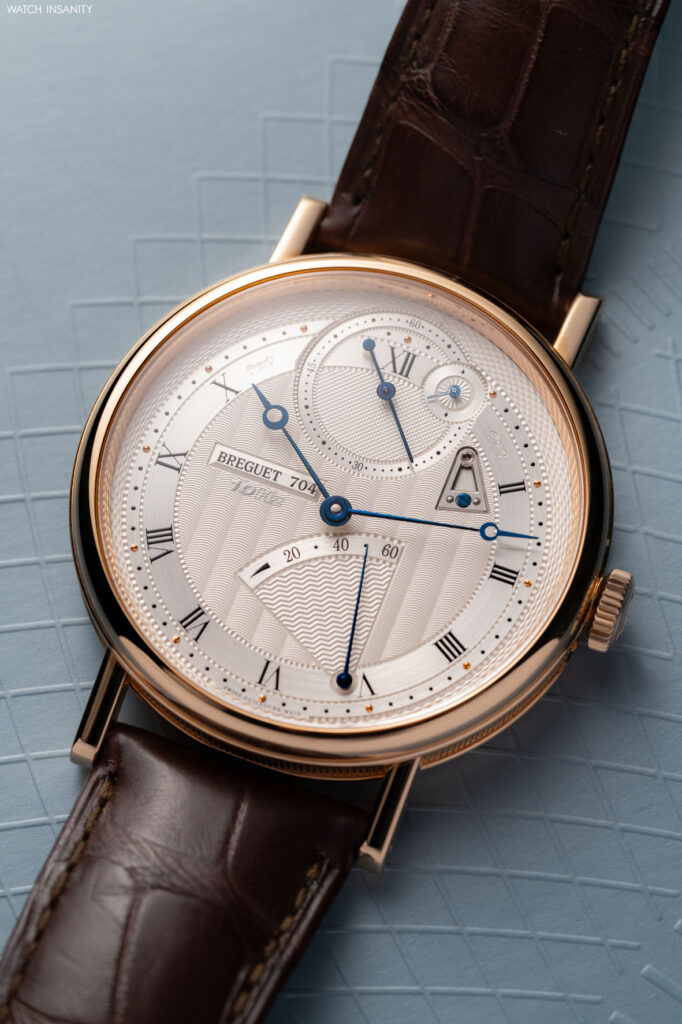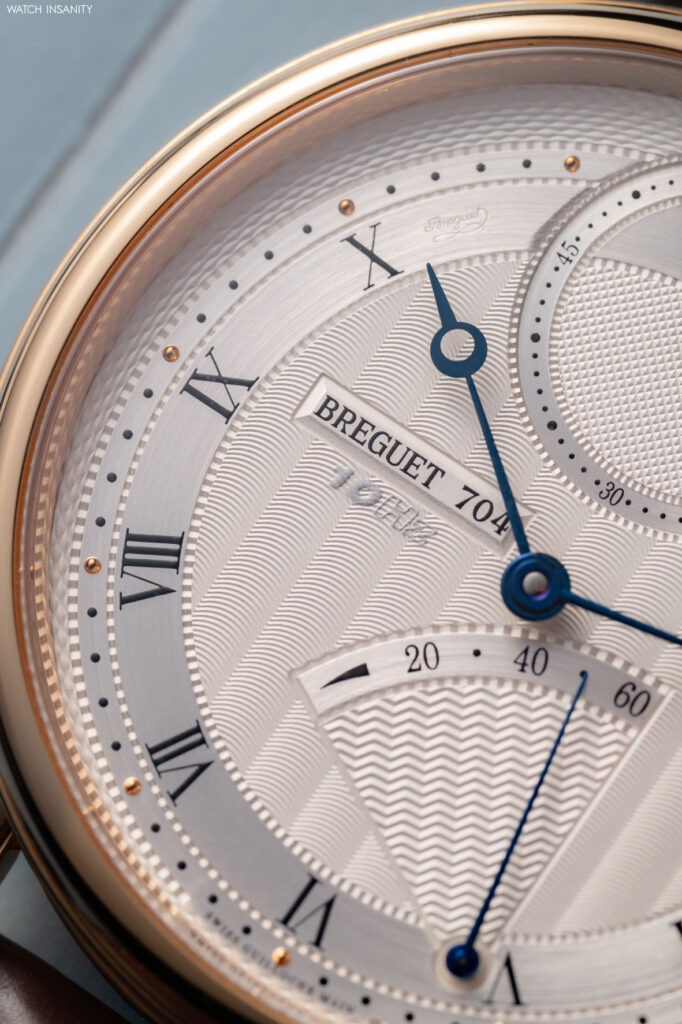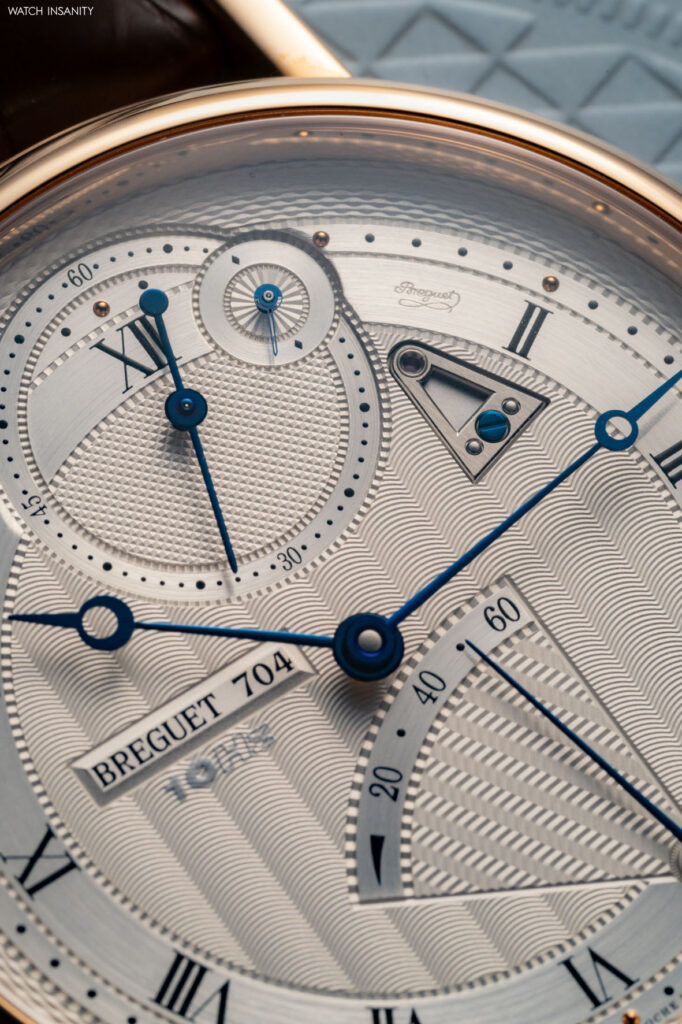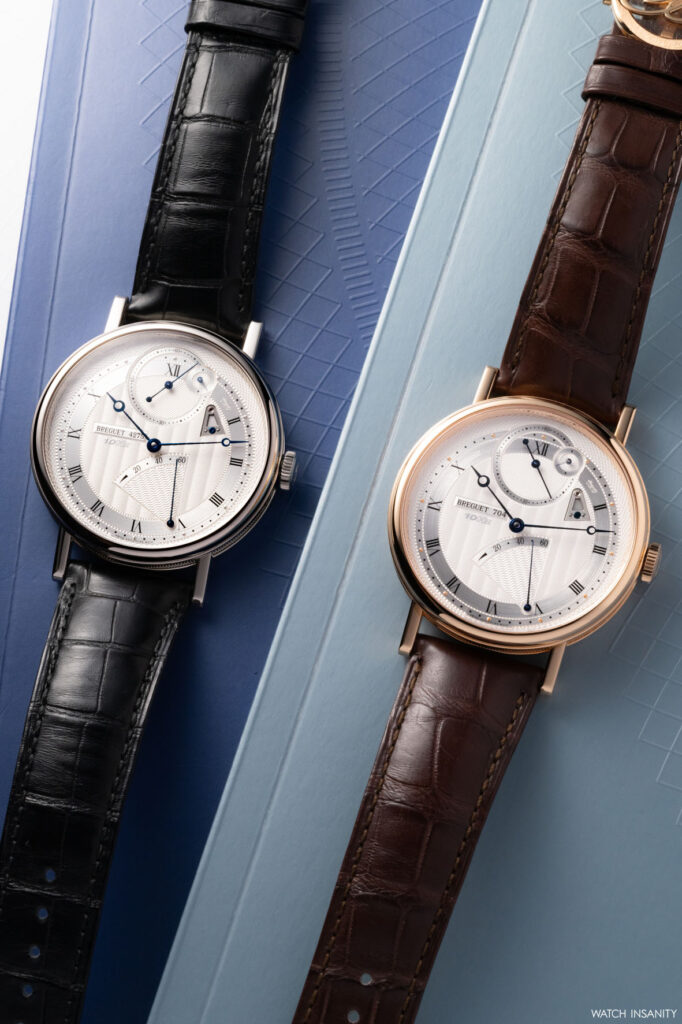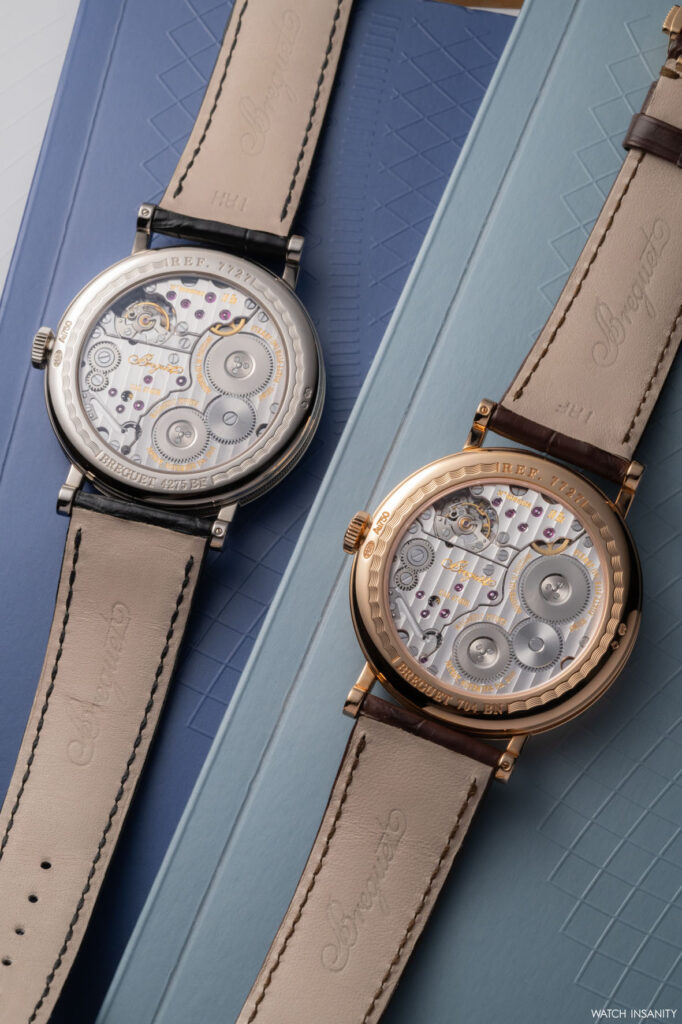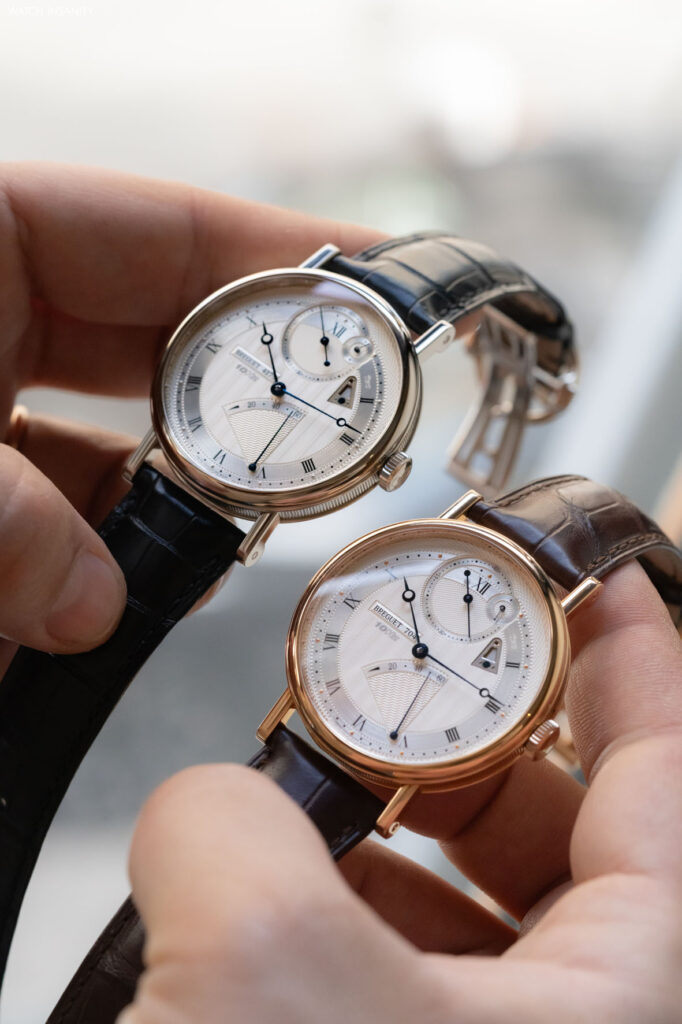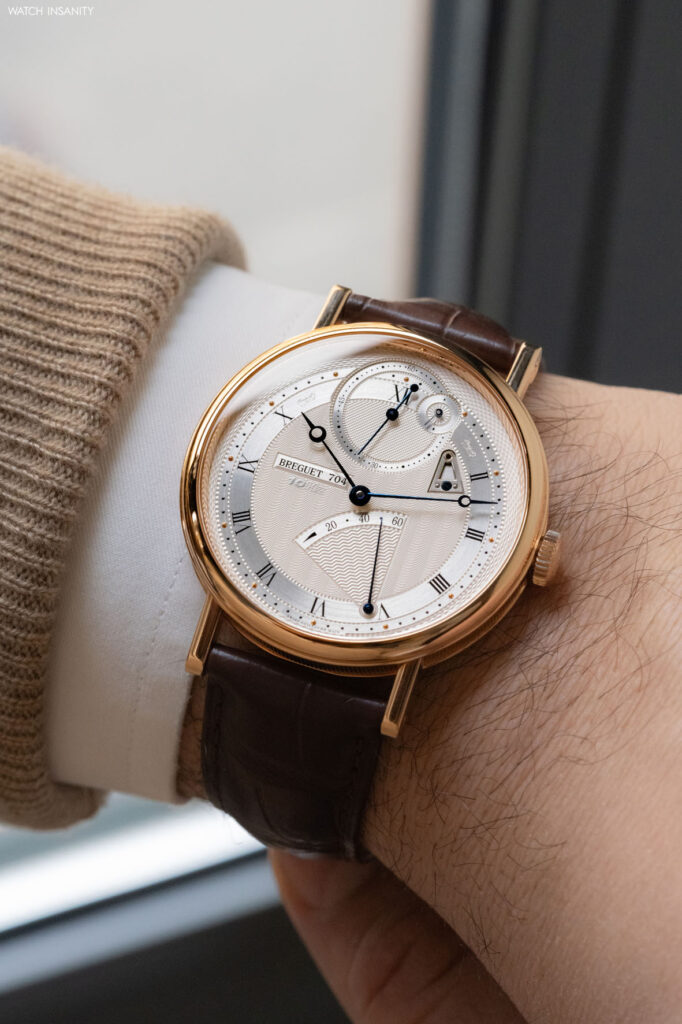Classique Chronométrie 7727: high frequency according to Breguet
20 May 2024There is a collection among Breguet’s refined offerings that has always been associated with elegance, tradition and watchmaking excellence. That is the Classique collection, which comprises timelessly fascinating pieces. These are timepieces that fully live up to the vocation of the line to which they belong: watches that combine classicism with tradition and superlative mechanics.
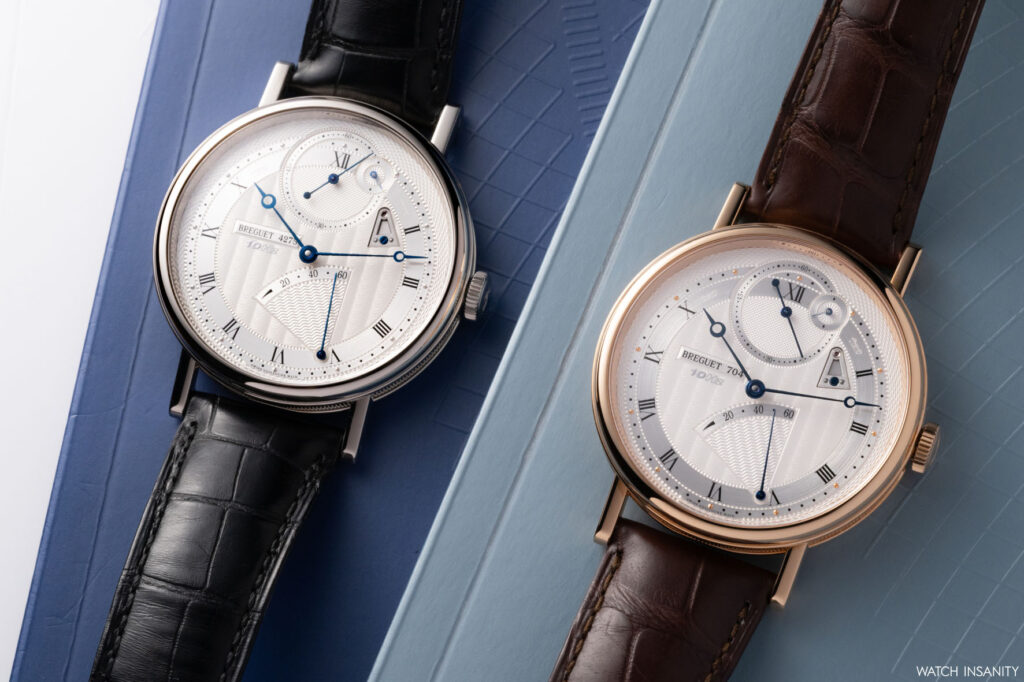
Prominent among them is the Breguet Classique Chronométrie 7727, one of the most elegant timepieces in the collection; it combines a high degree of technical complexity with a clean and legible appearance, concealing beneath its excellent finishing a masterpiece of mechanics developed by Breguet’s watchmakers.
BREGUET AND HIGH FREQUENCY
The story of the Breguet Classique Chronométrie 7727 goes back a long way and bears all the aesthetic and technical traits of the brand’s watches. It is a story that stretches from Abraham-Louis Breguet all the way to Basel. It was there, in 2012, that the House first unveiled the Classique Chronométrie 7727 and demonstrated its technical prowess by equipping a non-chronograph watch with a high-frequency movement. Indeed, very high frequency, because the manual calibre 574DR working inside the watch oscillates at 10 Hz, that is 72,000 vibrations per hour. It is here, in the mechanical heart of the Classique Chronométrie 7727, that the avant-garde spirit of a brand with almost 250 years of history manifests itself.
In most technical movement developments, the watchmakers’ main objective is to constantly improve precision. In this respect, a key achievement was made by Breguet in 2010, when itfiled a patent for the magnetic pivot, thanks to which it exploited the effects of magnetism to improve its watches’ precision and reliability.
The first example of a Breguet watch with a 10 Hz calibre was presented by the brand in 2010. It was the Type XXII, an updated version of the Type XX, in which the increase in the oscillator frequency had also brought a concrete improvement in the chronograph’s operation. The way in which the seconds hand moved was different: it made one complete rotation in 30 seconds, so that the trigger and the chronograph reading were doubly accurate.
THE INVENTION OF THE MAGNETIC PIVOT
But how does the magnetic pivot actually work? Thanks to it, Breguet controls and masters the negative effects of magnetism in a mechanical watch, so as to perfect the rotation and stability of the balance axis. The system is composed of two counter-pivots containing a very powerful micro-magnet – of about 1.3 Tesla – at each end of the balance axis. Thus, this system is dynamically stable and self-correcting.
The difference in magnetic force between the two magnets creates a magnetic field gradient, and the magnetic flux generated within the axis of the balance, in turn, creates an attractive force that keeps the end of the axis in permanent contact with the counter pivot. In this way, the axis no longer perceives differences in the position of the watch and the rotation conditions always remain the same. The axle is therefore insensitive to gravity, more stable and more resistant to shocks.
The result in terms of precision is that the Classique Chronométrie 7727 has an average deviation of -1/+3 seconds per day, which is better than the COSC standard of -4/+6 seconds. The power reserve is 60 hours, despite the high frequency of the calibre. To reach such level, this technology required six patents filed by Breguet.
In addition to these high-tech details, the watch also benefits from Breguet’s particular expertise in using silicon for the components most susceptible to magnetisation. The Classique Chronométrie 7727 is in fact equipped with a double balance-spring, an anchor and an escapement wheel in silicon created specifically for its movement, which also contribute to optimal precision.
PURE BREGUET AESTHETICS
The aesthetics of the Breguet Classique Chronométrie 7727 are everything one can and should expect from a watch from this maison. Starting with the case, which at 41 mm has ideal proportions for a wrist that seeks elegance. It is made of rose gold or white gold and features the classic soldered and highly elongated lugs, which make this reference particularly suitable for wrists of significant size.
The case side features the knurled workmanship typical of Breguet cases, so-called coin edge, and contrasts with the polished lugs and bezel – if the latter can be called such since it is so thin that it almost disappears, leaving the dial as large and visible as possible. Precisely for this reason, on the wrist, the watch seems larger than its admittedly restrained 41 mm.
The dial has Breguet’s classic aesthetic signature, with the hours and minutes slightly off-centred to the left. The small seconds counter is located at 12 o’clock, while the power reserve indicator, with its classic fan shape and elongated hand, is positioned at 5 o’clock. The harmony of the dial is balanced by two interesting details, located at 1 and 2 o’clock respectively: a 1/10th of a second indicator and the so-called pare-chute.
The former visually translates the great work of the movement and its 10 Hz, a hint of which can also be found in the inscription at 9 o’clock, below the Breguet logo. Its small hand is made of silicon, is very thin, slightly skeletonised and patented. The material choice and its special shape have a mechanical reason: they serve to ensure that the oscillator, which is extremely delicate, does not suffer from less inertia. The second is reminiscent of Abraham-Louis Breguet’s invention of 1790.
BRIEF HISTORY OF THE PARE-CHUTE
It is a shock protection system and one of Breguet’s most famous inventions. He observed that, in the event of a collision, the balance pivots were perhaps the most vulnerable part of the movement as they were so thin. So he decided to give them a cone shape and fix them with bearings of the same shape, mounted on a spring. After the first tests, the invention seemed to work so well that, from 1792 onwards, Breguet’s ‘perpetual’ watches integrated the new system, which was then used on all timepieces. Its final version was presented at the 1806 National Exhibition.
There is also a legend surrounding this feature, which, in fact, is the first example of an anti-shock system in watchmaking. Indeed, the story goes that Abraham-Louis was challenged to prove the validity of his invention by the famous French foreign minister of the time, Maurice de Talleyrand. After dropping his watch on the floor, Breguet asked one of the people who had witnessed the ‘challenge’ to pick it up and pass it on to the other bystanders: each testified that the timepiece still worked perfectly.
THE PROCESSINGS OF THE BREGUET MAISON
Every aesthetic detail on the dial invariably confirms that this is a Breguet creation. The dial is hand-finished and features six different processings: vagues de Genève for thecentral part, clous de Paris for the seconds counter, guillochage soleil for thetenths-of-a-second counter and guillochage en chevrons for the power-reserve ‘fan’. In addition, the hour circle features the guillochage liseré motif, while the outer rim is decorated with grains d’orge.
Breguet’s blued hands are the classic pomme évidée, in polished steel, while the secret signature at 10:30 and 1:30 completes the watch’s identifying elements. A non-trivial detail is the water-resistance of the case, guaranteed up to 3 bar; a value one would expect from an elegant reference like this, moreover with a sapphire crystal back. The version with the rose gold case has a brown leather strap, black on the white gold one. The latter is more expensive: 52,200 euros compared to 51,700 euros forthe rose gold reference.
A fascinating watch, because of its dual nature. On the one hand, the aesthetics and craftsmanship tradition, on the other, the highly advanced technology of the solutions employed within its calibre. A coexistence of ancient and modern features that perhaps only one brand is able to guarantee in the panorama of contemporary watchmaking.
By Davide Passoni


